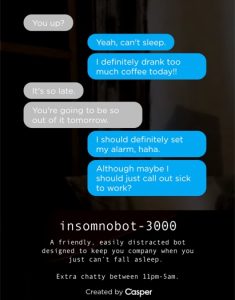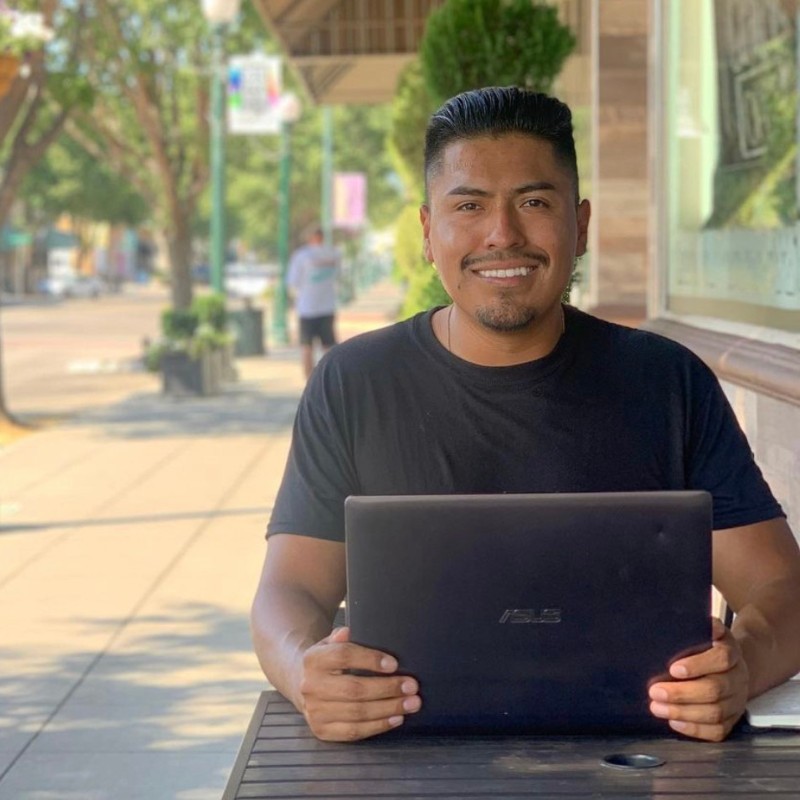Google’s Empty Cookie Jar Offers Room for Brand Innovation
BY: JOSE QUIROZ | NOV 11, 2021 – 5 MIN READ
Key Takeaways (5-minute read)
- Consumer experiences will no longer be driven by the data collected from cookies making first-party consumer connections online even more important for brands
- Qualitative data like case studies, focus groups, CRM data, and real-time consumer interactions will fuel innovation
- B2B connections will become more important for online advertising.
- Consumer data is not lost; use what’s already in your arsenal.
Google recently announced its plans to stop data collection via third-party cookies by the end of 2023—so what does this mean for advertisers?
For years, digital advertising has relied on text-based cookie files which, according to Webster, are best described as “a small file or part of a file stored on an internet user’s computer, created and subsequently read by a website server, and containing personal information (such as a user identification code, customized preferences, or a record of pages visited).” Third-party cookies—aka ones created by an outside advertiser rather than the website or the user looking at it—have allowed brands to identify and track their niche audiences online across multiple websites and platforms. The primary benefit is narrowing the target audience to those who have proven, through quantifiable data gathered through third-party cookie tracking, that they’re the most likely individuals to be converted into customers for your brand.
The primary problem? Consumer privacy.
We’ve all experienced the bizarre—even creepy—phenomenon of clicking on a brand, product, or interest online and later seeing a targeted ad for it splashed across our social media feed or in banner advertisements on a completely unrelated site. That’s the magic of the cookie.
“By using cookies, a user’s specific online behavior can be tracked, including what they clicked on, search history, device details, shopping preferences, and so on,” writes Forbes. “This allows a large degree of specificity in our analytics and, therefore, our campaign/advertising planning to really target consumers at an individual level.”
But digital marketers have perhaps relied too much on “the cookie crutch,” David Olesnevich, head of product at IBM Watson Advertising,

recently told the Morning Brew. “It was easy—I don’t have to think, I don’t have to go outside my comfort zone to reinvent the way I work. I can lean on this technology.” That said, he continues, “The cookie was never designed with privacy in mind. It can be used to capture all sorts of data on you.”
Change Consumer Experiences Online through Innovation.
Naturally, some brands might feel panic at having a valuable consumer data tool stripped from their arsenals. Don’t! This is not a cause to fret but rather to adapt for the better. Think instead of ways to connect with your consumers through enhanced user experiences on digital platforms. Because consumer experiences will no longer be driven by the data collected from cookies, first-party consumer connections online will become even more important for brands in the next couple of years. We’ve already seen this need rise in the past year thanks to COVID-19 making many experiences digital. It’s time to build on that momentum with new strategies for creating unique, enjoyable user experiences on your brand’s website, app, social media, OTT or other digital platforms
A fun example is mattress brand Casper, a 2014 startup that has since blossomed into a publicly-traded leader in sleep technology thanks to its consumer-driven focus on “sleep culture.” Casper’s primary audience was already online, as the brand’s innovative vacuum-sealed mattress-in-a-box model is what launched its success. Now it’s turning to artificial intelligence to reach consumers and help them sleep better with the Insomnobot3000. Described as “A friendly, easily distracted bot designed to keep you company when you just can’t fall asleep. Extra chatty between 11 pm–5 am,” Insomnobot is bringing a personal touch to Casper’s customers even when “the Best Bed for Better Sleep” just isn’t working. One only has to text Insomnobot for a chat.
“We wanted to make a bot that made 3 a.m. a little less lonely,” said Casper’s head of communications, Lindsay Kaplan. According to Inc., Casper used old-school AOL Instant Messenger chatbots as inspiration and underwent rounds of internal and consumer research tests to improve upon the bot’s believability, knowledge base, and response variables. The result is what they call a “universally friendly” pal that can talk about virtually anything—and a unique, innovative data collection tool that provides Casper with individualized research from their most valued consumers.
Take Advantage of B2B Connections.
Forbes called this loss of third-party tracking data an opportunity to get back to basics: “Think ’90s print media sales pitches: ‘We write about home decor, so you should advertise your flooring store in this section.’ Luckily, targeting has come a long way since then, so we won’t revert entirely to anecdotal marketing decisions. But the relationship between advertiser and publisher might become more direct.”
David Hayter, head of digital operations at UK-based women’s lifestyle publication Stylist, recently told Digiday, “We stopped using third-party data two years ago; the data we were getting back was massively inaccurate. We knew we were better off focusing on our own first-party data piece.”
Meanwhile, Permutive, a company that provides privacy-safe advertising infrastructure for publishers and brands online, says that the new system of online advertising will need to “bring advertisers and publishers back together so that the only place to buy an audience is by going to the publisher,” according to marketing director Amit Kotecha. “First-party data becomes the new currency, and advertisers know where to buy the media at scale across many publishers.”
Consumer Data Is More Than Cookies.
The crumbling third-party cookie doesn’t mean brands can’t track their consumer data; it just means they have to do it differently. Focus on qualitative data such as surveys and polls, web and mobile analytics, consumer purchase history, and more. Qualitative data like case studies, focus groups, CRM data, and real-time consumer interactions can also be implemented digitally to boost your consumer engagement and collect

valuable insight from the individuals who make up your audience.
TL;DR: Get back to people-based marketing strategies and create new ways to implement them across your consumer experiences both on and offline. Consumer engagement is always going to be your brand’s best indicator for success, so stop worrying so much about how you’ll know where your consumers have been online and focus more on communicating with them about where they want to go. Then, figure out how to get them there.
The future of branding is digital, and our team at Digital Caliente is excited to see what innovations will hold for the next year, the next five years, and the next decade of marketing online. Keeping a finger on the pulse of developments such as this allows us to help our clients prepare and implement the best digital marketing strategy for their brand. Get in touch if you’re looking for ways to maximize your digital footprint and ROI by igniting consumer connections.

WRITTEN BY
Jose Quiroz
Short Bio — As the Managing Director of Digital Caliente, Jose Quiroz continually researches and develops exciting new ways to make connections between brands and consumers through technology. Born in Orizaba, Veracruz, Jose is a “dreamer” who began his tech career over ten years ago and is now the digital operations and digital strategy specialist for this global brand studio. Although he is a digital nomad who loves traveling, backpacking, and heading wherever his laptop may take him, he strongly holds onto his family roots and Mexican culture. When he’s not learning or teaching the latest in digital strategy, you might find Jose practicing combat sports or poring over topics such as aliens, ancient civilizations, artificial intelligence, and biotechnology.

WRITTEN BY
Jose Quiroz
Short Bio — As the Managing Director of Digital Caliente, Jose Quiroz continually researches and develops exciting new ways to make connections between brands and consumers through technology. Born in Orizaba, Veracruz, Jose is a “dreamer” who began his tech career over ten years ago and is now the digital operations and digital strategy specialist for this global brand studio. Although he is a digital nomad who loves traveling, backpacking, and heading wherever his laptop may take him, he strongly holds onto his family roots and Mexican culture. When he’s not learning or teaching the latest in digital strategy, you might find Jose practicing combat sports or poring over topics such as aliens, ancient civilizations, artificial intelligence, and biotechnology.



